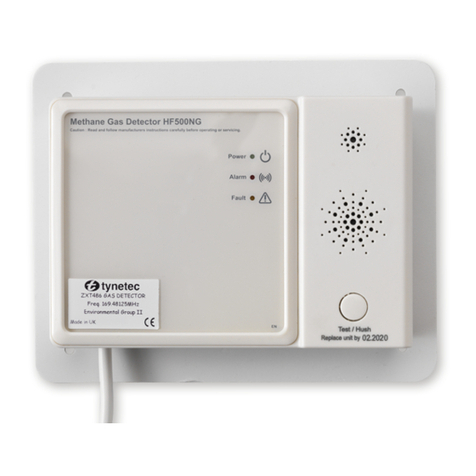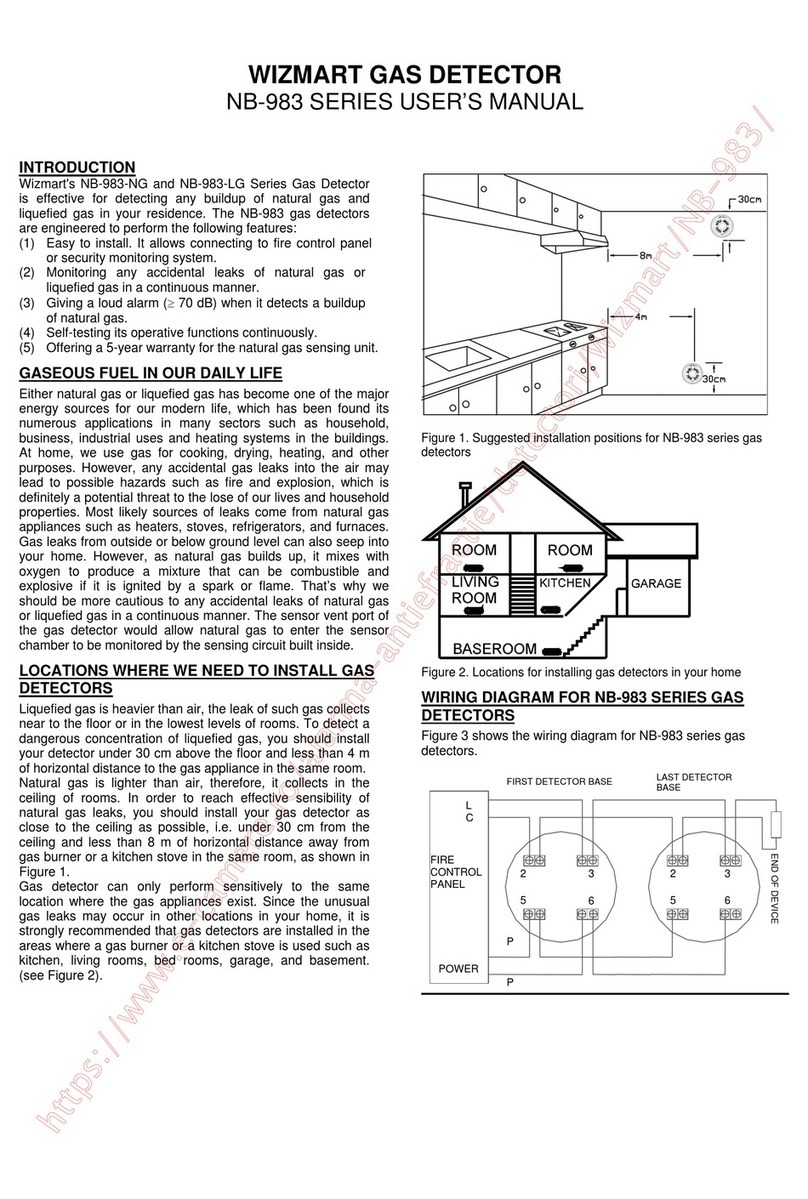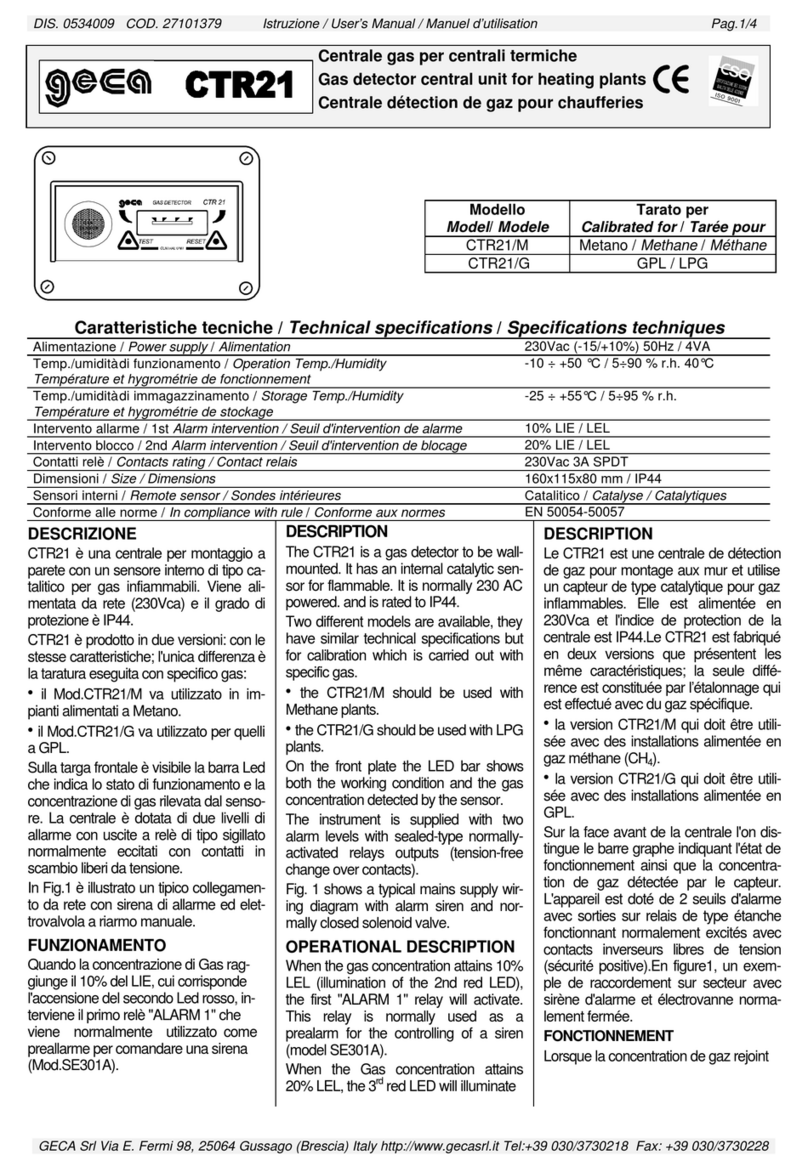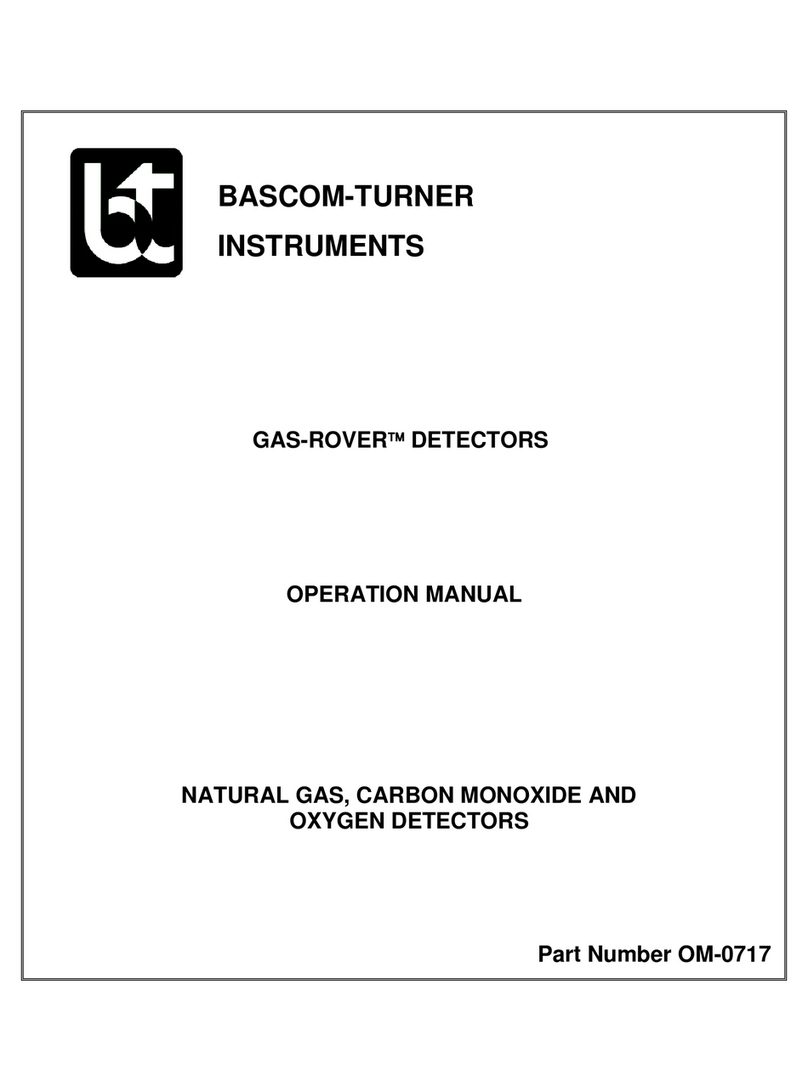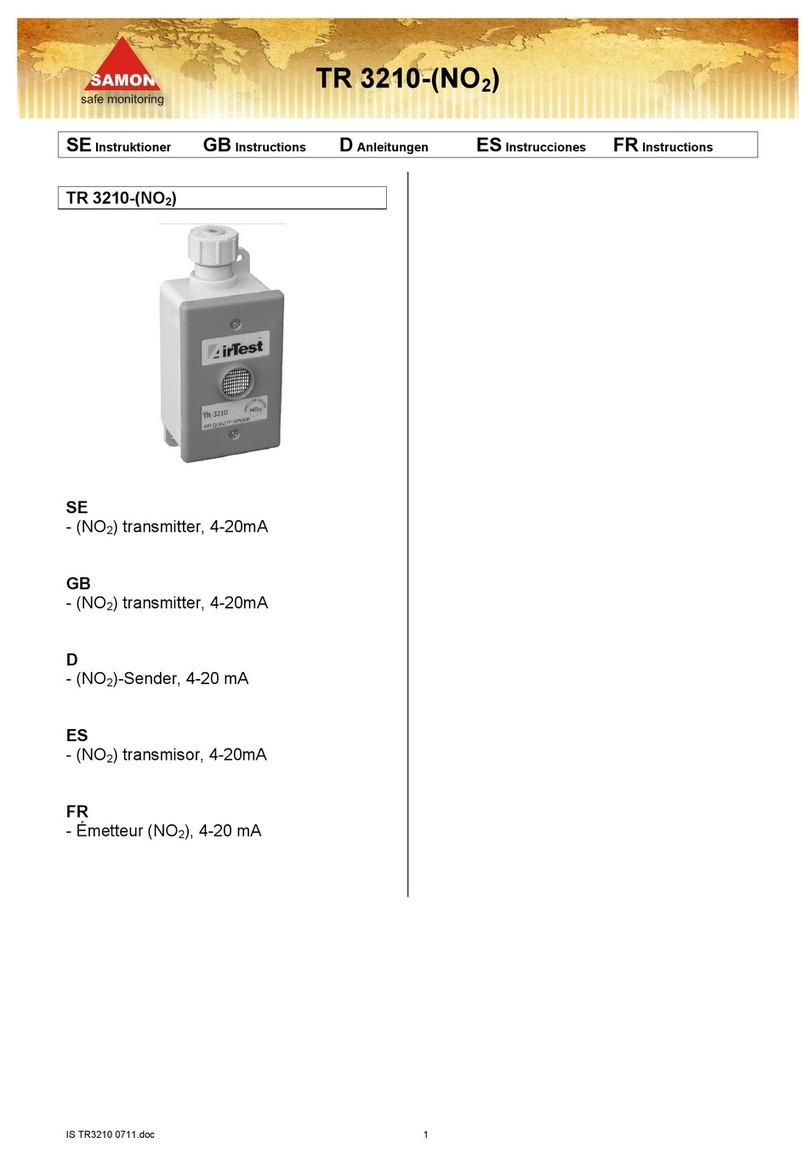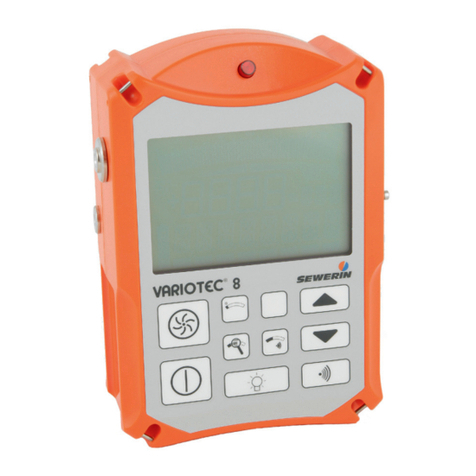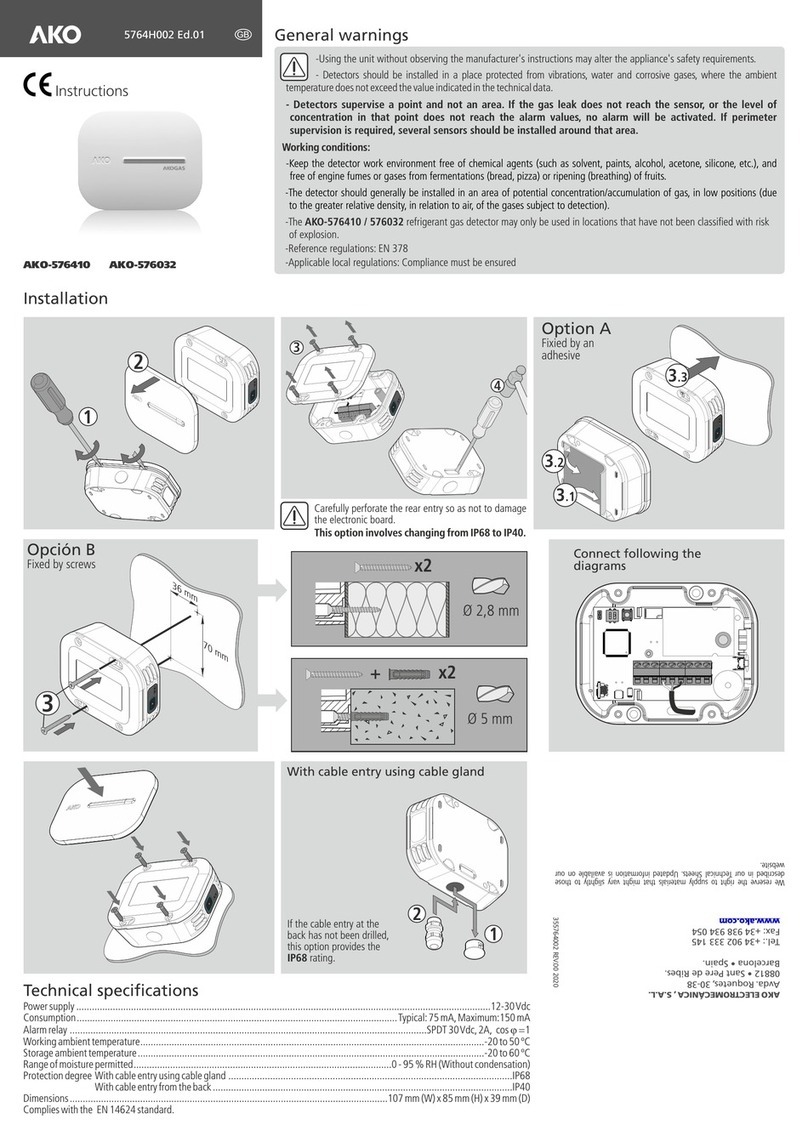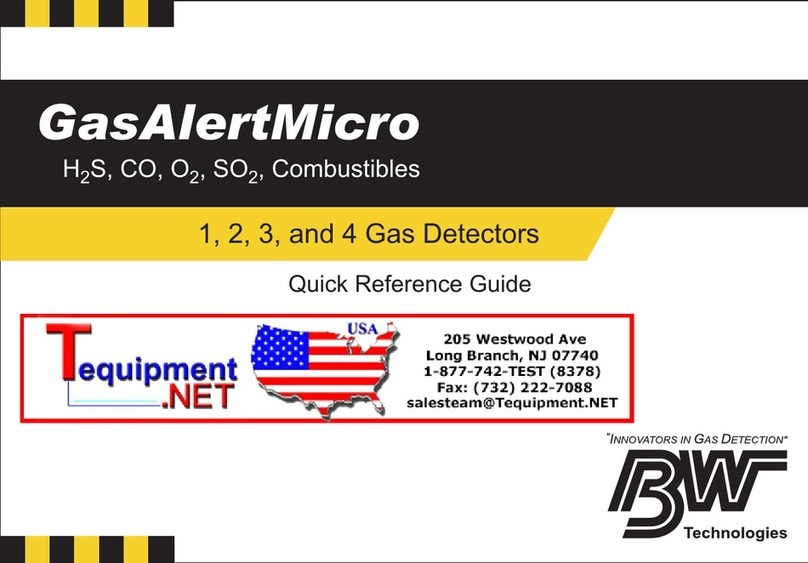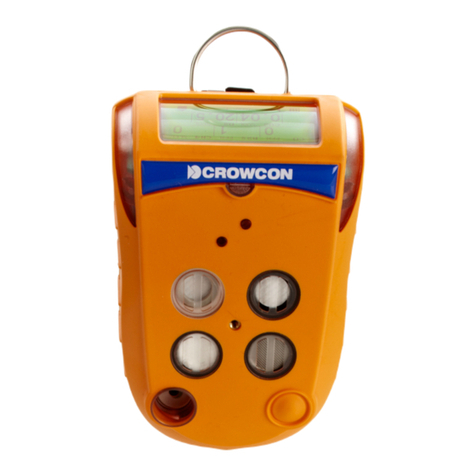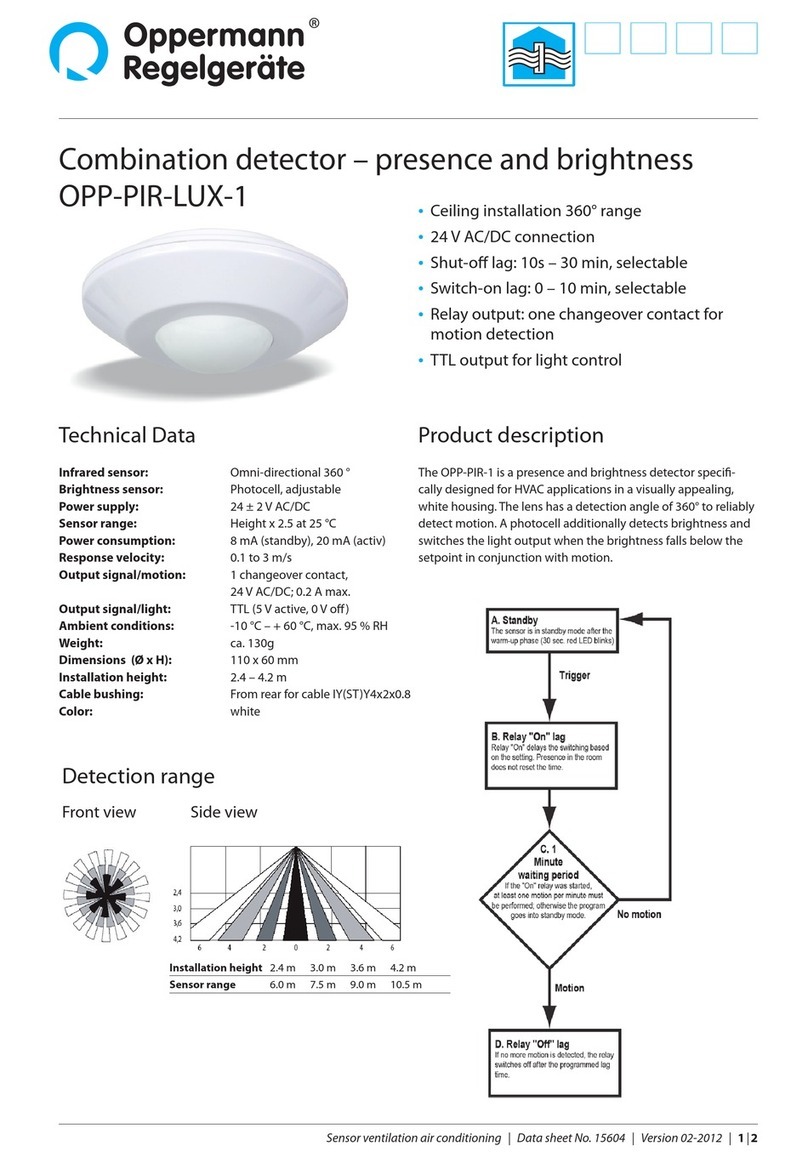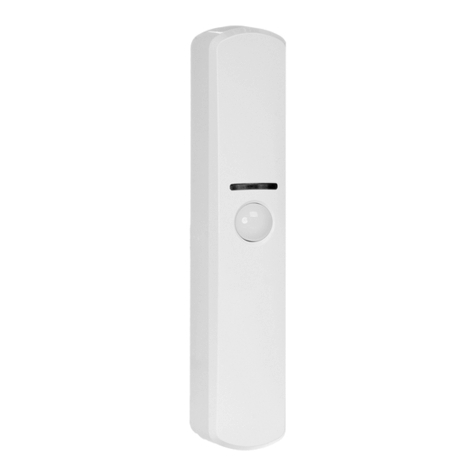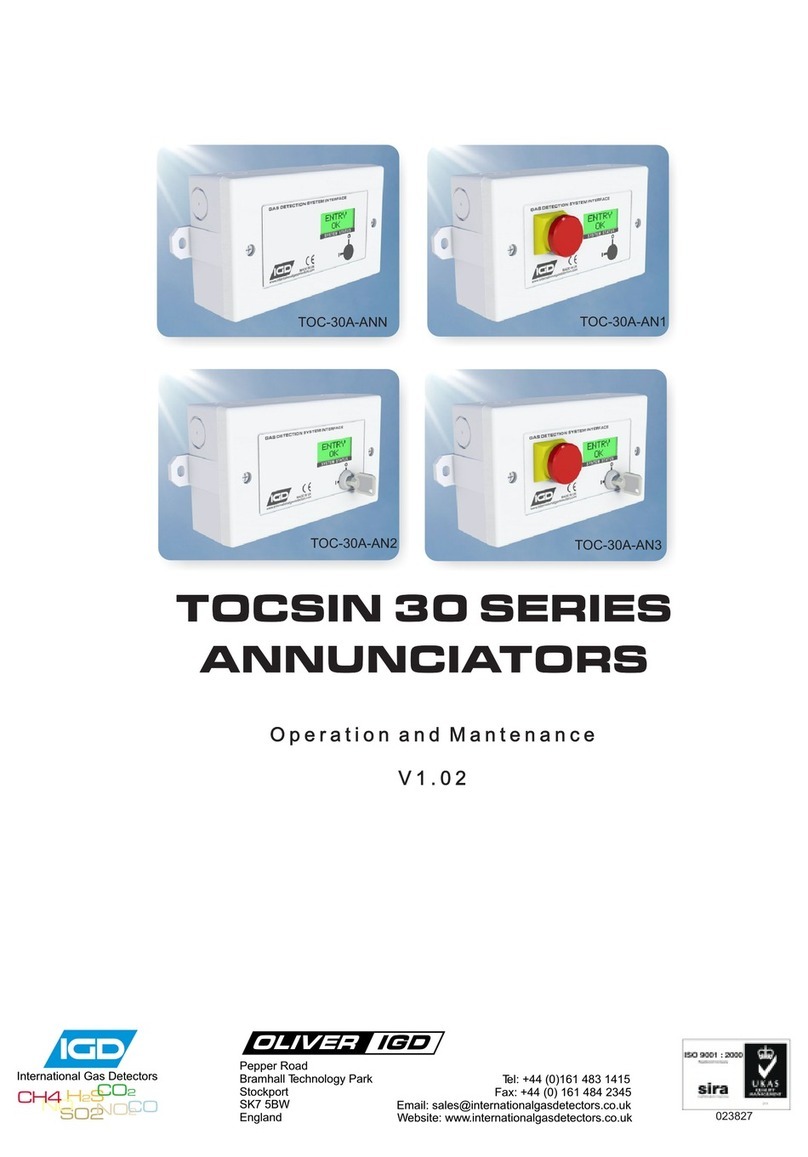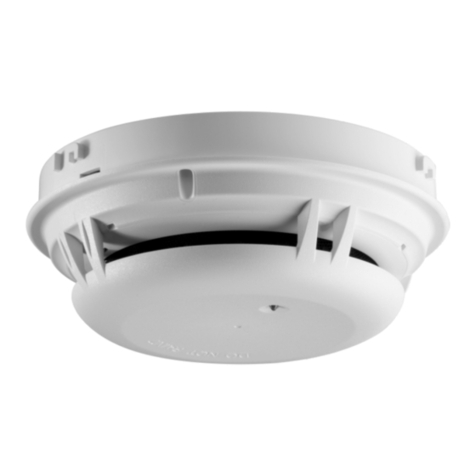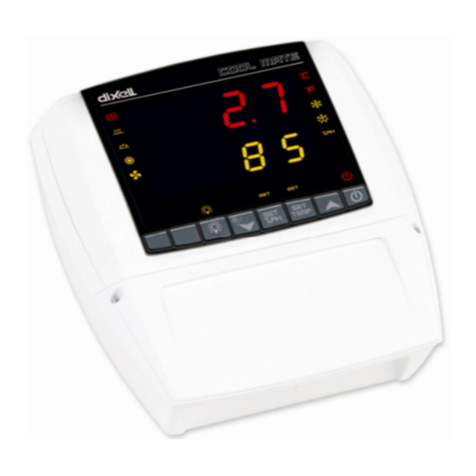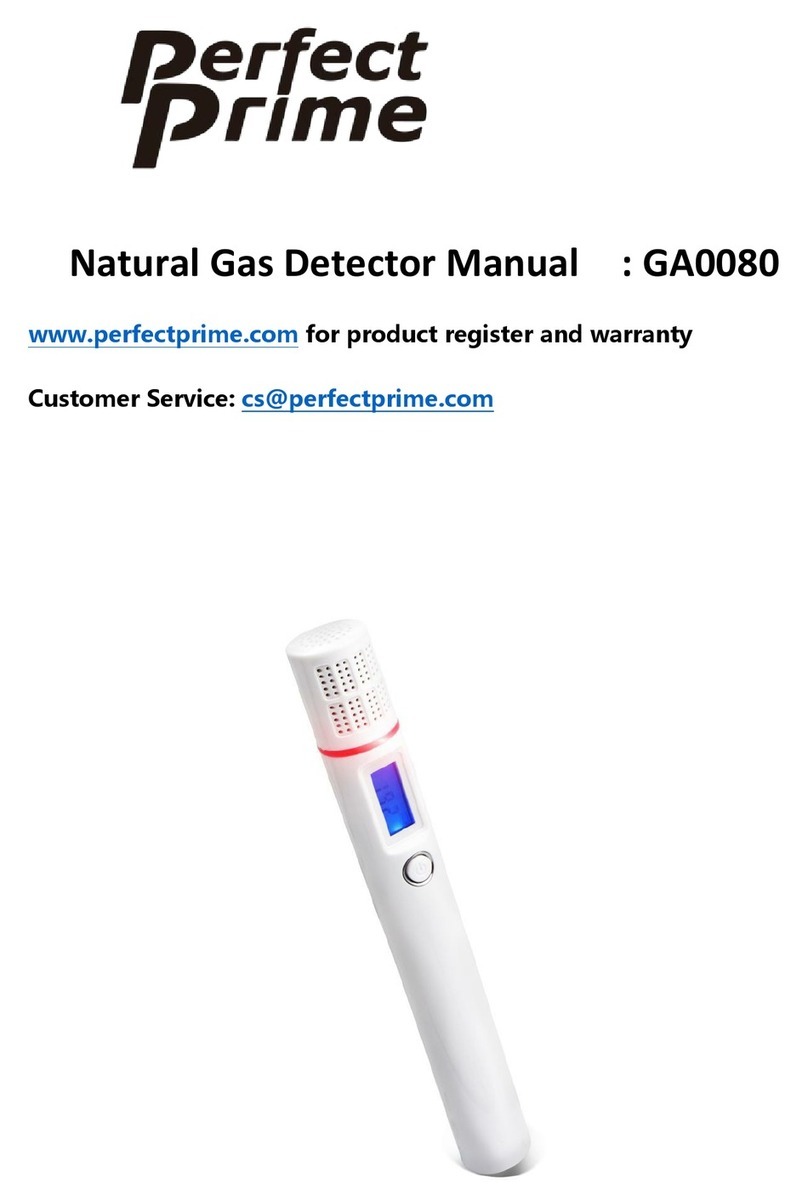NTI E-H2 User manual

E-H2
Hydrogen Gas Detector
Installation and Operation Manual
MAN236 Rev. 5/16/22
ENVIROMUX®Series


3
GENERAL SAFETY INFORMATION
INTENDED USE
The E-H2 Hydrogen Gas Detector is a low voltage (12-24VAC or VDC) electronic detector of hydrogen
gas. The detector is designed for connection to alarm control panels. Alarm control panels that work on 12 or 24
VDC can provide battery backup to the detector. This gas detector is NOT designed to detect smoke, fire or
carbon monoxide.
LIST OF WARNINGS AND CAUTIONS
Each person using this equipment must read and understand the information in these User Instructions before use.
Use of this equipment by untrained or unqualified persons, or use that is not in accordance with these User
Instructions, may adversely affect product performance and result in sickness or death.
Use only for monitoring the gas which the sensor and detector are designed to monitor. Failure to do so may result
in exposures to gases not detectable and cause sickness or death. For proper use, see supervisor or User
Instructions, or call Macurco Technical Service.
Detector may not function effectively below 32 F or above 120F. Using the detector outside of this temperature
range may adversely affect product performance and result in sickness or death.
This detector helps monitor for the presence and concentration level of certain specified airborne gases. Misuse
may produce an inaccurate reading, which means that higher levels of the gas being monitored may be present and
could result in overexposure and cause sickness or death.
The detector is not designed to measure compliance with Occupational Safety and Health Administration (OSHA)
commercial or industrial standards.
When the unit is powered up it performs a self-test during which the green LED light will blink for a period of one and
one half to two minutes. Afterward, the green LED light will turn on continuously to indicate the unit is in normal
operation (ARMED). If the self-test fails or the green LED light does not turn on continuously do not use. Failure to
do so may adversely affect product performance and result in sickness or death.
Immediately exit the environment if there is an alarm condition on the detector. Failure to do so may result in
sickness or death.
This detector will only indicate the presence of combustible gas at the sensor. Combustible gas may be present in
other areas. Accommodation spaces should be well ventilated when household cleaning supplies or similar
contaminants are used.
Do not cover or obstruct visual alarm LED. Doing so may adversely affect product performance and result in
sickness or death.
Do not disassemble unit or attempt to repair or modify any component of this detector. This detector contains no
user serviceable parts, and substitution of components may adversely affect product performance and result in
sickness or death.
CAUTION
Avoid the use of harsh cleaning materials, abrasives and other organic solvents. Such materials may
permanently scratch the surfaces, damage the sensor, labels, or instrument housing.
If you have any doubts about the applicability of the equipment to your job situation, consult an
industrial hygienist.
! WARNING


5
INSTALLATION AND OPERATING INSTRUCTIONS
The following instructions are intended to serve as a guideline for the use of the E-H2 Hydrogen Gas
Detector.
It is not to be considered all-inclusive, nor is it intended to replace the policy and procedures for each
facility.
This detector helps monitor for the presence and concentration level of certain specified airborne gases.
Misuse may produce an inaccurate reading, which means the higher levels of the gas being monitored
may be present and could result in overexposure and cause sickness or death. For proper use, see
supervisor or User Instructions.
LOCATION
The E-H2 is NOT intended for use in industrial applications such as refineries, chemical plants, etc. The
unit can cover approximately 900 sq. ft. The coverage depends on air movement in the room or facility.
Locate the unit high in the room where storage batteries are being charged, or where there may be other
hydrogen sources. Extra detectors may be needed near any areas where people work or the air is
stagnant.
Hydrogen gas is lighter than air, so it will tend to rise and accumulate in high places. We recommend
placing one sensor in each corner of the ceiling in high-risk environments where hydrogen may
accumulate.
This product is intended for use in ordinary indoor locations of family living units and office workspaces.
The detector is not designed to measure compliance with Occupational Safety and Health Administration
(OSHA) commercial or industrial standards.
INSTALLATION
1. Mount the detector high on a wall within one foot of the ceiling, or on the ceiling. Use the same
spacing as for smoke detectors- 30-foot centers, 900 square feet per detector.
2. The three part plastic case allows the detector to be either surface mounted or installed over a four-
inch square or double gang electrical box, providing a near flush mount. The detector snap on front cover
will need to be removed before installation. To remove it, lightly pry the front cover off of the mounting
plate (middles section) with a coin or flat screwdriver inserted into the vent at the bottom (see below).
The cover will snap off exposing the electronics and mounting plate.

6
3. For flush mount, remove the 2 screws and rear cover from the mounting plate and use the appropriate
hole-pattern for installation. The four holes toward the center of the mounting plate match the hole-pattern
of a double gang electrical box. The four holes near the corners match the pattern of a four-inch square
box. When wall-mounting the detector, mount the detector so the “TOP” marked side of the mounting
plate is at the highest side. Snap the front cover back on when finished, making sure that the lights line up
with the access holes.
4. When using the detector with normally-closed initiating circuits, use the Com. and N.C. alarm relay
connections.
5. See wiring diagram (below) and on page 9 for connections of the E-H2.
6. The E-H2 uses a full wave bridge rectifier at its power input, so that it is independent of the polarity of
the input power. It can operate on DC or AC voltages between 12 and 24 volts.
7. A switching regulator is used to efficiently match the wide input voltage range to the fixed, internal
power system. As a result the power consumption is fairly constant at about 0.75 watts in normal
operation, and 1.0 watt in alarm.
8. The alarm control panel zone inputs must be terminated with end of line resistors (E.O.L.R.), which are
provided with the panel. The detector does not have an internal audible sounder and must be connected
to an audible device that provides at least 85dB sound output.




SPECIFICATIONS
DIMENSIONS- WxDxH: 4.5x5x1.63 In. (114x127x41 mm)
SHIPPING WEIGHT: 0.54 pound
VOLTAGE: 12 to 24 VAC or VDC
CURRENT (non-alarm): 45 mA @ 12VDC, 22 mA @ 24VDC, 65mA @ 12VAC, 45 mA @ 24VAC
CURRENT (alarm): 70 mA @ 12VDC, 35 mA @ 24VDC, 100mA @ 12VAC, 65 mA @ 24VAC
COLOR: White
SENSOR MAINTENANCE: Not required
ALARM RELAY RATING: 0.125 Amps, 40V, 3VA
TROUBLE RELAY: 0.25 Amps, 40V, 10VA
OPERATING TEMPERATURE RANGE: 32⁰to 120⁰F
ALARM SET POINT: 10% LEL Hydrogen gas
10
This manual suits for next models
1
Table of contents
